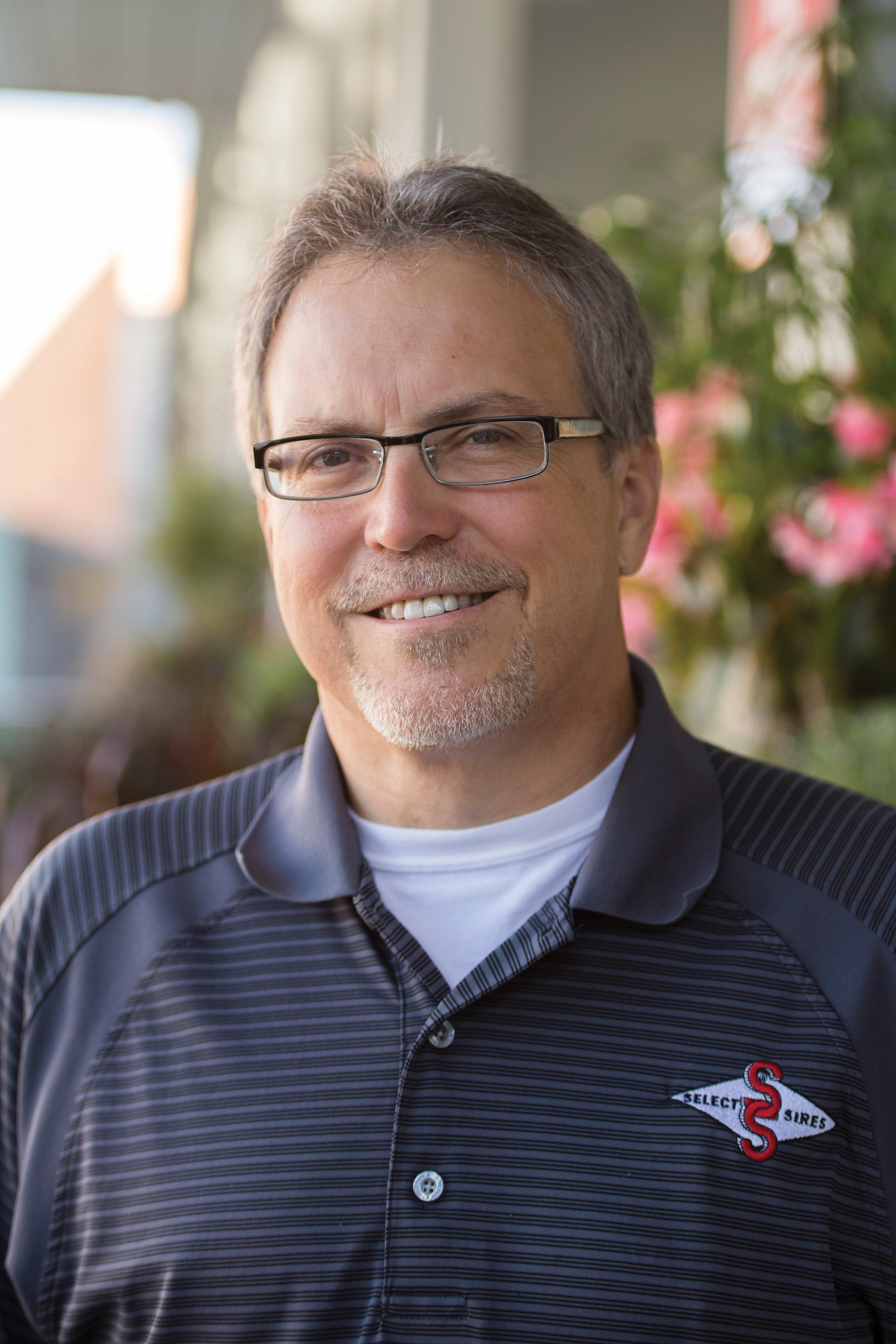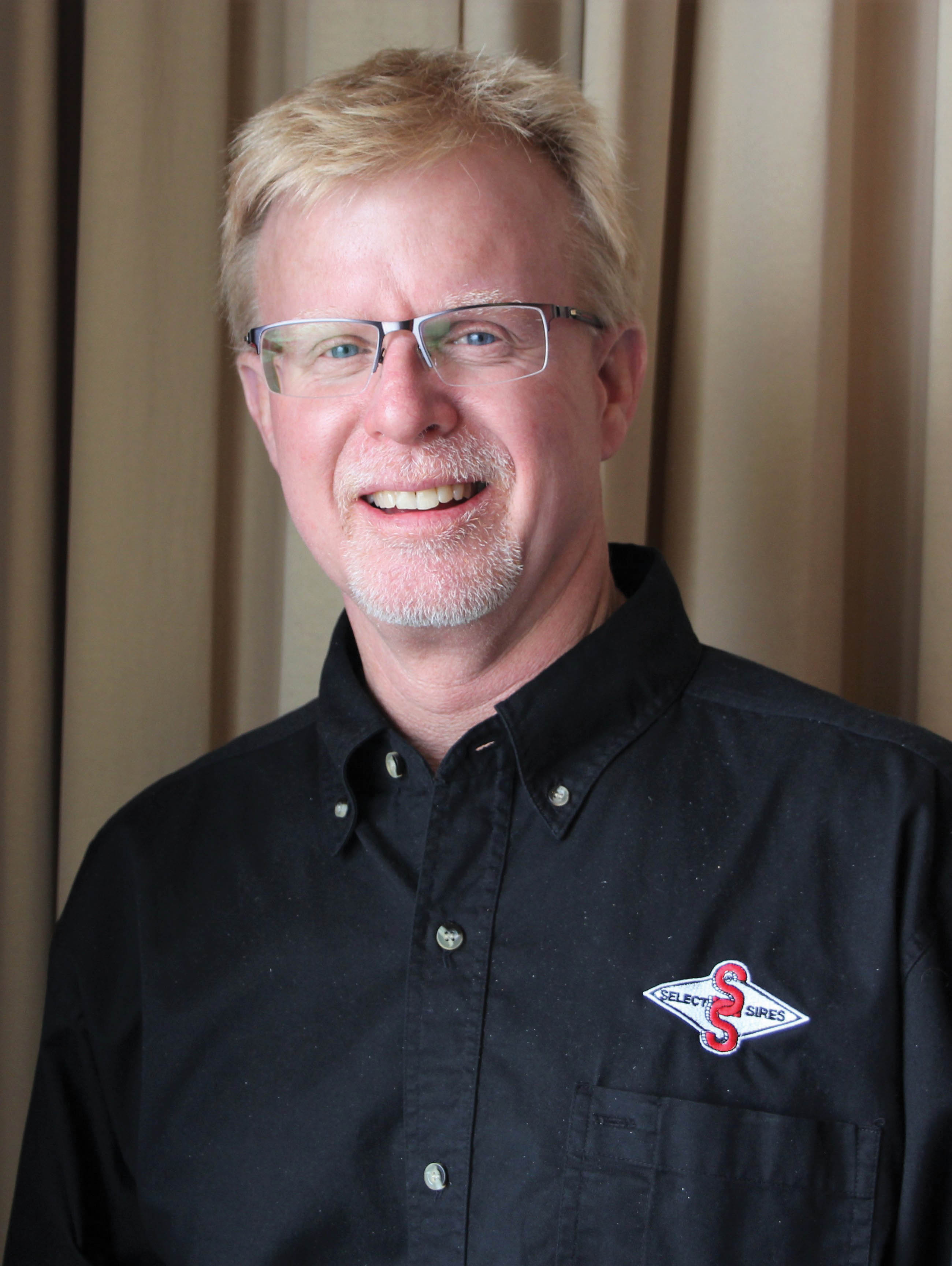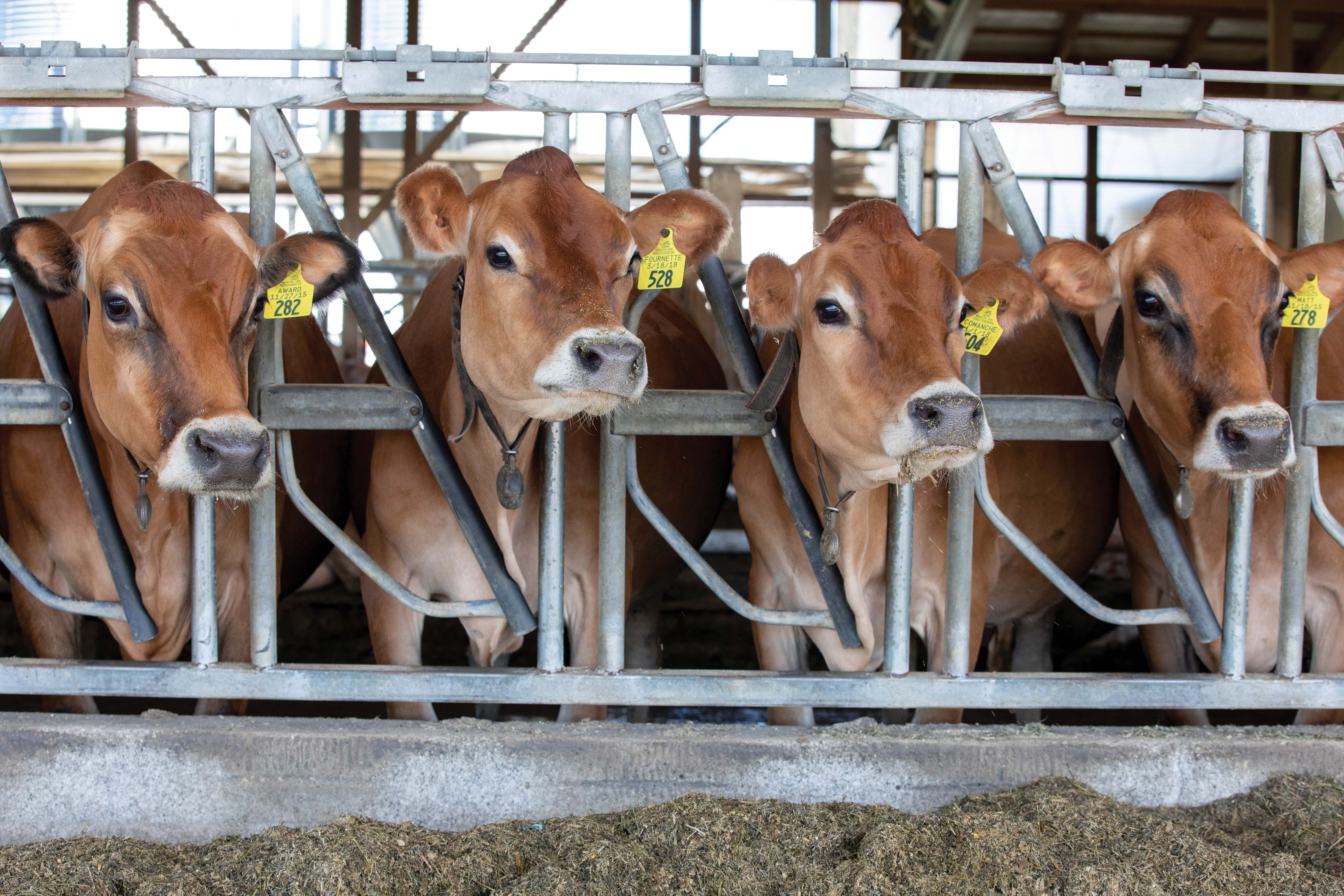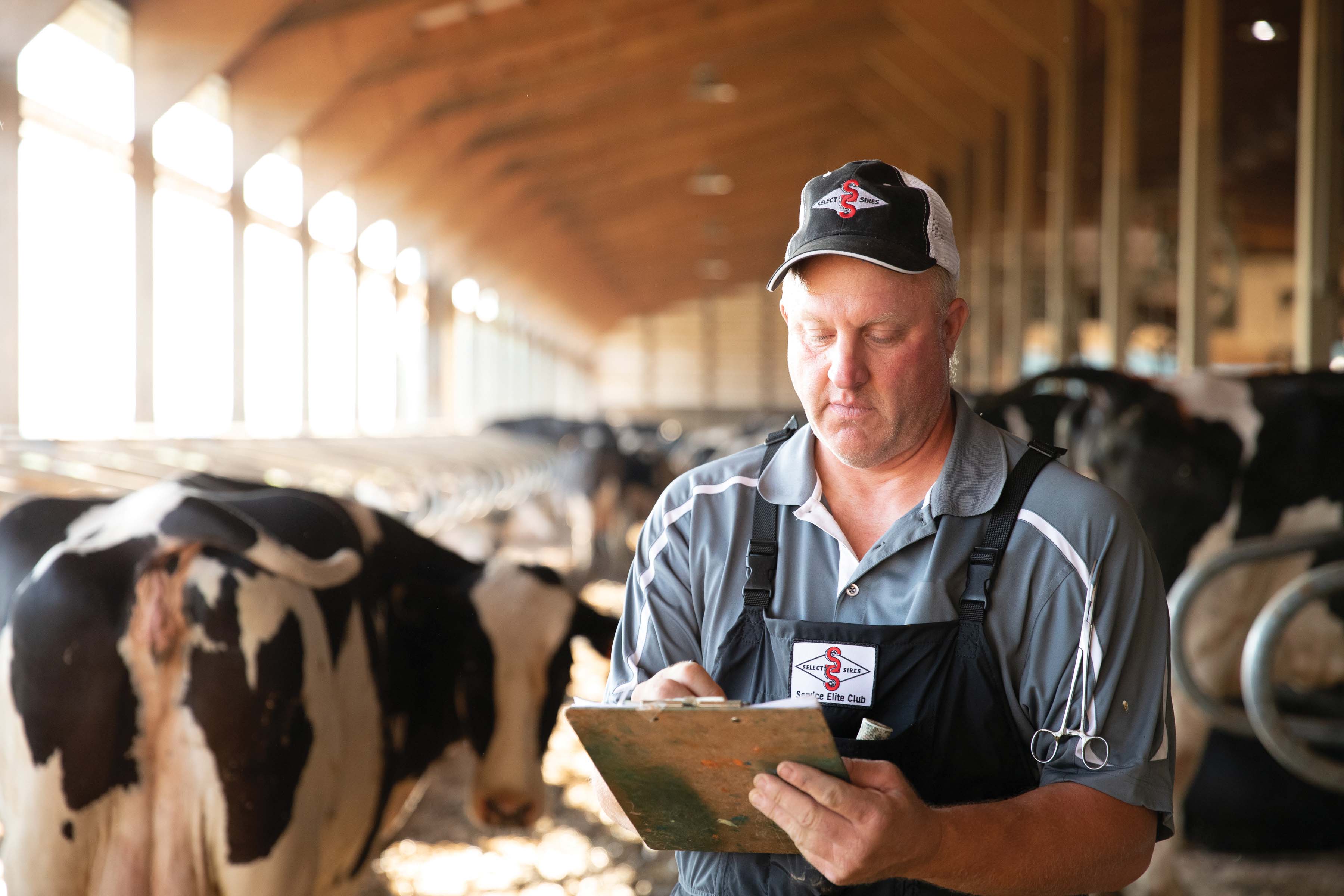

Lyle Kruse, Vice President U.S. Market Development, Select Sires Inc.
King Smith, Vice President Select Dairy Solutions, Select Sires Inc.
Greg Collins, Select Dairy Solutions Data and Training Support, Select Sires Inc.
No. 1: Know your replacement needs.
Despite the increased focus on herd inventory management in recent years, there are still some operations raising too many replacements. This provides the opportunity to reduce herd replacement costs, which is one of the key dairy profit indicators. A well-designed replacement plan includes utilizing the best combination of dairy and beef genetics with conventional semen, sexed semen or embryos to maximize genetic progress. This also generates the most profitable pregnancy outcome for each cow and heifer in the operation. Each operation demands a unique approach and your Select Sires trusted advisor team can help design a program and determine how many replacements you need to create each month.
No. 2: Reduce replacement heifer losses.
Many dairy operations have heifer mortality losses prior to six months of age that exceed 5%. Along with losing heifers with promising genetic potential, poorly designed heifer programs can lead to increased health challenges that also hamper resulting performance potential as lactating cows. Along the way there are opportunities to improve calf health, including: facilities, sanitation, colostrum management and pre- and post-weaning nutrition. There are also genetic tools available to select for improved calf livability and wellness.
No. 3: Know your herd culling rate and work to reduce it if needed.
Record culling reasons accurately and then devise a plan to reduce each reason. If your herd culling rate is too high, consider sire selection that includes more health and fitness focus like Select Sires’ Herd Health Profit Dollars index™ (HHP$™). Specific genetic selection for mastitis and lameness can also be considered to reduce incidence levels in your operation. Many dairies have also invested in CowManager® for intuitive cow health alerts that allow early treatment - reducing recovery time and lost production.

No. 4: Determine a pre-breeding culling plan for heifers.
If available, use genomic data to identify heifers that are unlikely to return the investment in their rearing costs and cull them from the operation. Using years of assembled genomic data compared to performance, it is clear that not every heifer deserves a future role on the dairy. Cull heifers that are health challenged – especially respiratory issues (more than three respiratory events). Use of lung ultrasound scans can help weed out health-compromised heifers.
No. 5: Have a plan for the first service on cows and heifers.
While most dairy operations have a good plan in place for days in milk at first service for their cows, there are still operations with as many as 10% of their cows not bred for the first time within 100 days in milk. If this is an area of opportunity at your dairy, evaluate how cows get lost in your first service program.
For heifers, this is often an overlooked area of management with opportunities for some operations to save significant investment in feed costs by reducing days open in heifers. Reducing days open in heifers starts with a good first service plan. Based on heifer development and age for heifers to calve, set a proper age at first service and be very aggressive to get every heifer serviced as close to that range as possible.
Preferably, all heifers should be at the target age for first service within 40-45 days. Weekly heifer pregnancy checks, followed by weekly pen moves to bring new heifers into the breeding pens are a good recipe for improving heifer reproductive efficiency. Target a goal of getting 85% of heifers pregnant within three services.
No. 6: Increase heat detection rates for cows and heifers.
The best herds achieve 70% or greater heat detection rates for both cows and heifers, so it can be done. Achieving superior detection rates involves a highly compliant first service program for both cows and heifers, followed by intensive detection of follow-up services.
- Using synchronization for some or all first services can also improve heat detection rates.
- Develop an intervention plan for heifers without a first service within two heat periods (at approximately 42 days) after designated age at first service.
- Continuous training on heat detection techniques with the technician team can help improve detection rates. You may also consider using a professional Select Sires technician.
- Clean-up bulls for natural service are hard on cows, facilities, and a danger to your team, and typically create far fewer pregnancies than expected.
- CowManager can significantly boost heat detection rates.
- Increased genetic selection for Daughter Pregnancy Rate (DPR) and Heifer Conception Rate (HCR) can improve overall cow and heifer reproductive efficiency for future generations.
No. 7: Review and update ‘do not breed’ (DNB) strategies for both cows and heifers.
Review your reproductive culling strategies for cows and heifers with your team on a regular basis and develop a target for how many repeat services is enough for your cows and heifers. Do not be reluctant to create reproductive culls (DNB) of open cows after multiple services. Getting an average production cow pregnant after 200 days in milk usually leads to a cow that is not producing enough milk to pay for her cost of production and yet is not far enough along in gestation to go to the dry pen.
Many dairy operations do not have a good plan in place for determining heifer reproductive culls and there are often heifers with more than five unsuccessful breeding attempts. Once you have coded a heifer as a reproduction cull, quickly move them out of breeding pens and down the road.
No. 8: Fine tune cow culling to avoid feeding unprofitable cows.
With rapid surges in costs, review culling strategies often, even on a weekly basis. If you use DairyCOMP 305, make use of the CwVal item. This includes making monthly updates to the metrics that are unique to your operation to customize the CwVal ranking data, which can help you make more informed culling decisions.
No. 9: Overstocking pens can often waste resources.
Each pen and dairy operation has a tipping point for stocking density that can impair production, health and reproductive efficiency, especially with cows that are early in lactation and not yet pregnant. Periods of heat stress greatly increase the challenges with overstocking.

No. 10: Prioritize investments.
With current milk prices, there may be opportunities to invest in improvements in the operation. Work with your local Select Sires team to determine areas of improvement in cow comfort and herd management that will have the biggest impact on future profits, such as:
- enhanced heat abatement for all lactating cows,
- new or improved facilities for dry cows, fresh cows, and heifers,
- an investment in an automated monitoring system.
Connect with your local Select Sires trusted advisor to leverage these profit growing strategies today!